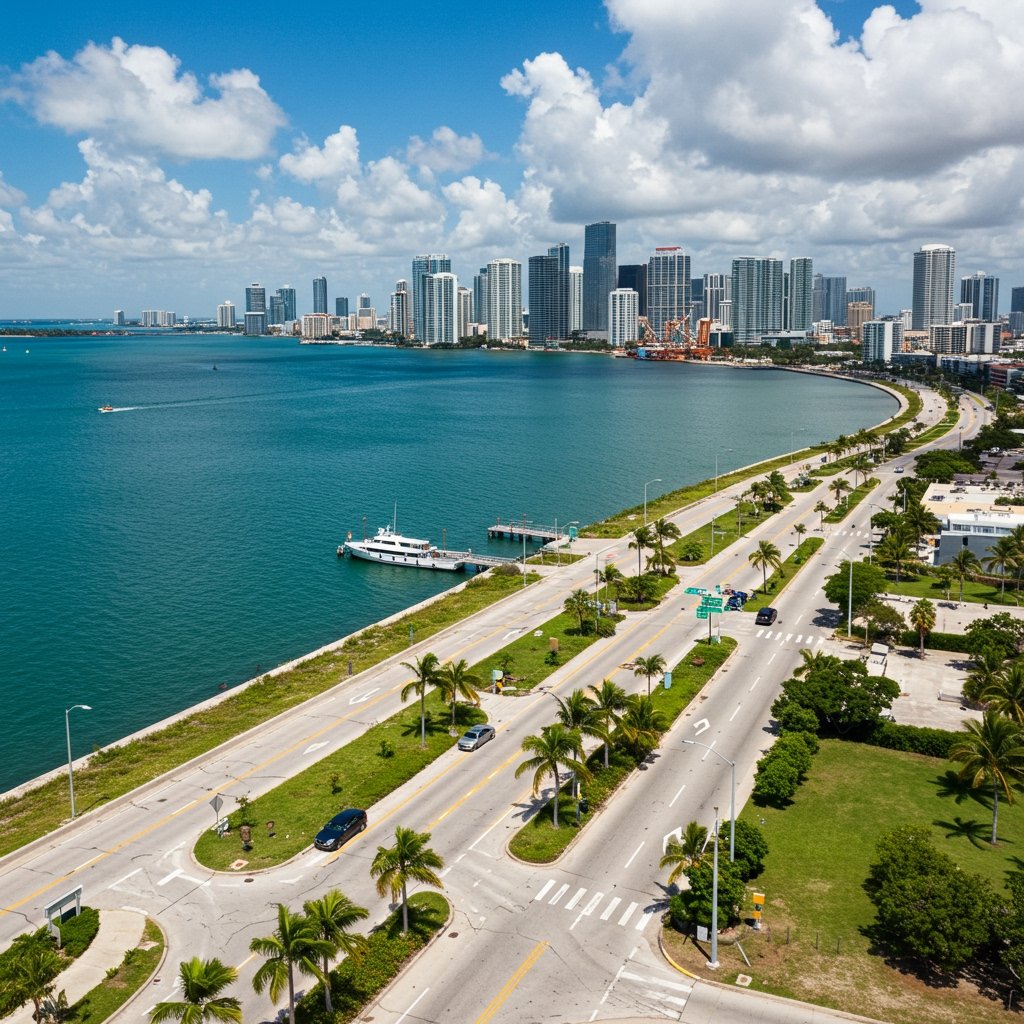Miami-Dade Commission Approves Landmark Bayfront Development Rezoning
Miami, FL – In a pivotal decision set to dramatically reshape a significant portion of the city’s waterfront, the Miami-Dade County Commission granted final approval on Friday, June 7, 2025, to the controversial rezoning of a prime 15-acre parcel of land situated strategically near the bustling PortMiami connector. The 10-3 vote marks a major victory for the Atlantic Shores Group, the developer behind the ambitious multi-billion dollar mixed-use project slated for the site.
The commission’s decision culminates a rigorous review process that included extensive public hearings earlier in the week, where both proponents and opponents of the development voiced their perspectives. The approved rezoning reclassifies the land to allow for significantly greater density and height, paving the way for a large-scale project designed to integrate residential, commercial, and public spaces.
Project Scope and Vision by Atlantic Shores Group
The multi-billion dollar development envisioned by Atlantic Shores Group is poised to be one of the most substantial private investments in Miami’s urban core in recent years. Plans submitted and approved include the construction of high-rise residential towers that are expected to add significant housing capacity to the downtown area. Complementing the residential component will be extensive commercial space, which could encompass a mix of retail outlets, office facilities, and potentially hospitality venues, creating a vibrant, mixed-use urban environment.
A key element of the approved plan, and one that proponents highlight, is the mandatory inclusion of a two-acre public waterfront park. This mandated green space is intended to provide public access to the bayfront, offering recreational opportunities and open space in an increasingly dense urban landscape. The park is seen by supporters as a crucial community benefit offsetting the intensity of the private development.
Atlantic Shores Group has emphasized that the project aims to create a dynamic destination that integrates living, working, and leisure activities. The location near the PortMiami connector is considered highly valuable, offering unparalleled access and visibility, though this proximity is also central to the concerns raised by critics.
Community Opposition and Environmental Concerns
Despite the ultimate approval, the project faced strong opposition from various community groups, most notably the Save Our Bay Alliance. Throughout the public hearing process conducted earlier in the week, representatives from the alliance and other concerned citizens raised significant objections to the proposed rezoning and the scale of the development.
Central to the opposition’s arguments were concerns over potential environmental impacts on Biscayne Bay. Advocates expressed fears that the large-scale construction and subsequent increased urban activity could lead to further degradation of the bay’s fragile ecosystem through runoff, pollution, and habitat disruption. Biscayne Bay is a vital natural resource, and its health is a perpetual concern for environmental organizations and many Miami residents.
Another major point of contention cited by the Save Our Bay Alliance was the anticipated increase in traffic congestion. The development’s location near a major transportation artery like the PortMiami connector means any significant increase in residents, workers, and visitors could exacerbate already challenging traffic conditions in and around downtown Miami. Opponents argued that the existing infrastructure is insufficient to handle the additional burden, potentially leading to significant delays and reduced quality of life for commuters and local residents.
The Path Forward
The 10-3 vote by the Miami-Dade County Commission represents the final governmental land-use approval required for the rezoning. With this hurdle cleared, Atlantic Shores Group can now move forward with detailed design, permitting, and ultimately, construction. The multi-billion dollar investment signifies a major economic undertaking for the region.
While the rezoning is approved, the project will still be subject to various permitting processes at the local and potentially state levels, which will involve further environmental reviews and compliance checks. Community groups like the Save Our Bay Alliance, while unsuccessful in blocking the rezoning, are likely to continue monitoring the project’s progress and ensuring compliance with environmental regulations and mitigation requirements.
The development is expected to transform the 15-acre site near the PortMiami connector into a prominent urban node, adding significant density and activity to Miami’s evolving skyline. The success of integrating the high-rise residential and extensive commercial spaces with the mandated two-acre public park, while mitigating environmental and traffic impacts, will be closely watched by residents and stakeholders across Miami-Dade County as the multi-billion dollar vision begins to take physical form in the coming years.





